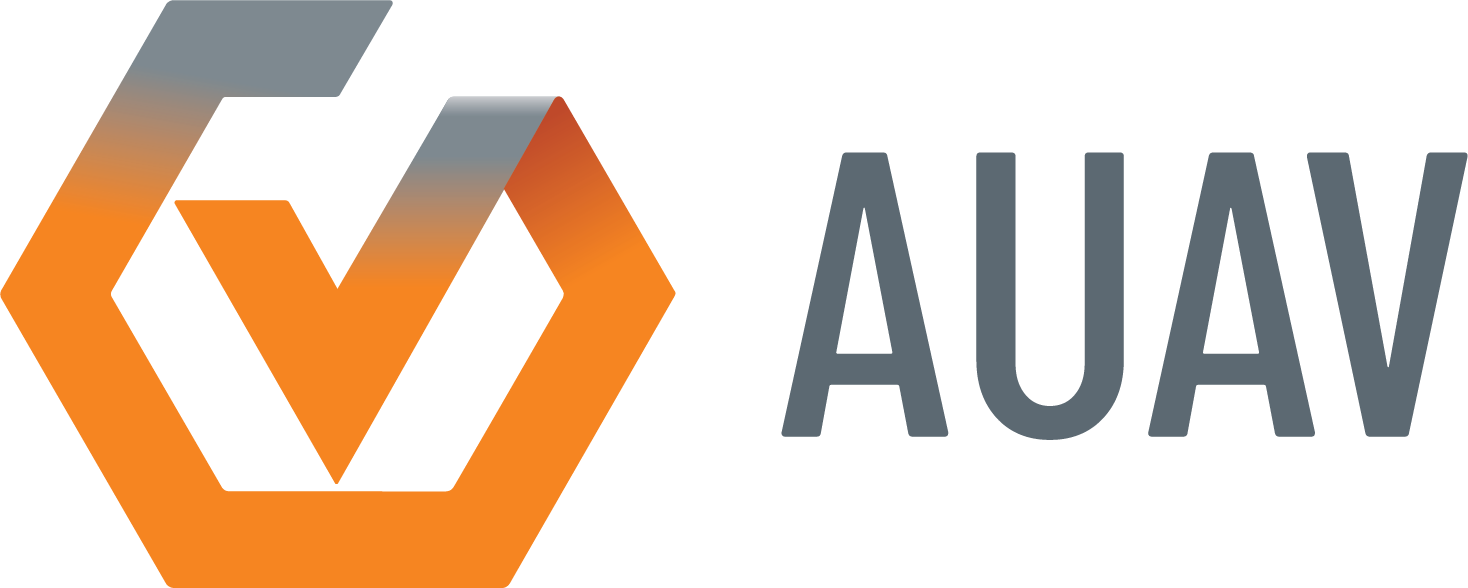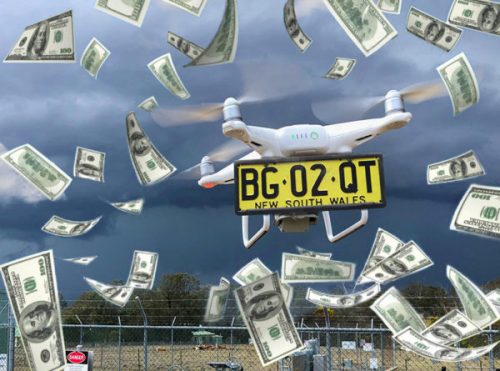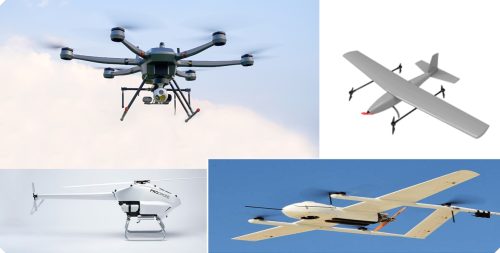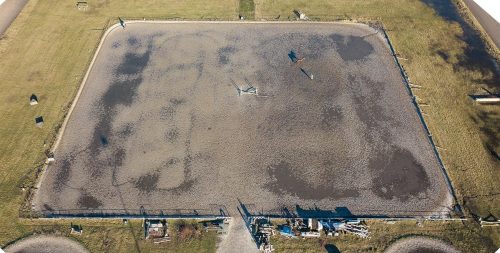Executive Summary:
- Drone registration is coming in 2020, which AUAV is highly supportive of.
- The proposed fee structure is just $20 for recreational users covering an unlimited number of drones.
- A fee of $160 is proposed per-drone for commercial operators. This can easily double the cost of the smaller units over their lifetime, and add up to tens of thousands of dollars for larger fleets (or $0.3 million in the case of the Intel light shows!).
- This will have unintended consequences of:
- Pushing many operators underground to avoid the high fees.
- Causing incomplete registration records, as people under-report to reduce their costs.
- Putting the brakes on the move toward using many smaller and safer drones rather than fewer larger ones.
- Commercially favouring unlicensed operators (who already get a free ride under the sub-2kg de-regulation).
- Reducing the overall cost recovery for CASA by loading it mostly on to the licensed operators, given they are a small minority of users.
We propose a simple flat fee system which would result in higher overall revenues for CASA while keeping things fair between licensed and unlicensed operators.
For those interested, we’ll dive into all that in more depth below, with our recommendations at the end.
When CASA’s drone registration scheme comes into effect in 2020, commercial drones of any size and all recreational drones weighing over 250 grams will need to be registered.
We certainly welcome this move to help improve safety and accountability.
However, we feel the implications of the proposed cost model have not been thought through, and in its current form is:
- Favouring unlicensed operators.
- Double-taxation for licensed operators, given they are already paying CASA quite a lot for licensing and flight approvals, and they are already in CASA’s database.
- Placing the highest cost on the segment posing the lowest risk.
- Discouraging the growth of larger fleets, which would bring safety and economic benefits.
- Reducing the overall potential for cost recovery to CASA.
- Causing an incomplete registration record, as people will only register the drones they know they’ll need, and keep the others ‘on the shelf’ if needed later.
- Significant financial burden for a nascent industry before it reaches critical mass in the economy.
The current proposal is for a flat $20 annual fee for recreational pilots (no matter how many drones they operate) and $160 for each individual drone used by commercial operators.
CASA’s regulatory changes have been stacking the deck in favour of unlicensed operators in recent years, and that is certainly the case with the proposed registration fee structure.
This seems to be at odds with CASA’s safety remit and approach to all other facets of aviation regulation, where highly trained and regulated operations are encouraged.
We aren’t trying to reduce CASA’s revenues, quite the contrary. We want to see CASA’s revenue from the drone industry increase, so they can more effectively police the cowboy elements. That requires a broader cost base though, rather than deeply gouging a small number of operators who are already incurring high costs for doing things properly.
Fees as a Behavioral Incentive
Government generally uses fees and taxes to encourage good behavior and discourage harmful behaviour. Hence things like fines for not wearing a seatbelt, taxes on cigarettes, and tax rebates for private health insurance.
CASA is heading in a different direction with the proposed registration fees though, which will further encourage a mass of small operators in the unlicensed category, the ones likely to cause the most problems.
We frequently see unlicensed operators undertaking riskier work and bending the rules. They don’t hold a license, so they can’t lose it for doing the wrong thing. And unless an effective training and testing requirement is brought in they can’t even be expected to know what the rules are.
As an example, AUAV will apply for a special permit at great expense to fly within proximity of an airport. We will have additional processes in place, with dedicated spotters and radio operators, etc as required by CASA. The small operator is more likely to just jump in and do it, either because they aren’t aware of the rules or knowing they’ll get away with it because CASA isn’t seen to be doing any significant policing or enforcement. They can do (illegally) in an hour what would take us weeks of time and red tape to achieve when doing it by the book.
Why will the registration fees encourage people to fly unlicensed?
The fees are clear at both ends of the spectrum: larger licensed operators like AUAV are obviously commercial, so are due to pay $160 per drone each year. Someone who never undertakes work (paid or otherwise) with their drone is then obviously a recreational user.
However, a growing number of drone owners currently fall into a grey area in the middle: they aren’t trying to make a dedicated business of it, but are doing odd jobs here and there to earn some extra money with the expensive gear. With the proposed costs most of these will likely say they are only recreational to avoid paying the higher fees. The system will have dissuaded them from joining the more legitimate and licensed part of the drone industry, with easy access to insurance.
Industry Trend: Many Drones Make Light Work
When CASA formulated the world’s first commercial drone regulations, it was a very different industry, made up mostly of large drones costing hundreds of thousands of dollars.
One of the major trends in the industry now is a move to using many smaller drones to achieve the same results. This has quite a few advantages, such as:
- Reduced kinetic energy, and therefore impact risk to people and manned aviation.
- Lower cost.
- Improved reliability through mass-market products (millions of people testing these across the globe on a daily basis, not just infrequent use by a small group).
- Improved reliability through redundant gear (it is easy to have backup units when they cost $1000, not so much when they cost $1M).
- Lower noise (ask the residents near the Google delivery trials if this is important).
- Faster innovation through easily accessible, low-cost equipment.
By placing a high per-drone fee on the operators (which can double the cost of a smaller drone over its lifetime), the scheme will put the brakes on this trend, and will incentivise the industry to push again toward larger and more hazardous drones, on a slower tech development trajectory.
Two quick examples, with both drones having a 3 year lifespan:
- A large fixed-wing drone costing $180,000 will have a lifespan registration cost of $480, being 0.26% of the value of the drone.
- A small multi-rotor drone costing $600, will have a lifespan registration cost of $480, being 80% of the value of the drone.
In relative percentages, the fee for the small drone is 300x the larger one, so companies will obviously try to reduce the burden of fees over time by favouring a small number of larger drones.
It would be quite reasonable for the registration cost to be a percentage of the drone’s value, but it quickly gets complicated, e.g. 2nd hand equipment, companies that make rather than buy their drones, or in the case of a $300k drone system of which $250k is the LiDAR payload, is it just the drone or the whole system cost?
We therefore recommend a simple flat fee when registering your drones, per operator not per drone, as outlined further below.
Finally, a simple example that a per-drone cost doesn’t work at scale, consider the Intel drone light shows, a perfect example of many small drones in action.
Their record-breaking display of 2066 drones would cost more than $330,000 to register under the proposed pricing. This would make such shows unfeasible in future even at their current scale, let alone the number needed if we want to replace large scale fireworks displays like New Year in Sydney Harbour.
Given that these light shows are not only enthralling the public but promising to reduce costs (often paid with public funds) and reduce environmental impact compared to traditional pyrotechnic fireworks, this is probably not something we want knee-capped by the drone registration scheme.
AUAV’s Recommendations
Licensed operators holding a Remote Operator Certificate (ReOC) are already paying a lot into the system through their licensing, permits and compliance. In the interests of fairness and to help encourage the growth of the professional end of the industry, we strongly suggest that CASA drop the per-drone fee targeted at this group.
We recommend a simple flat fee in the order of $100-$200 be payable on an annual basis by all licensed or accredited drone operators, no matter how many drones they’re operating. Every drone will still get a registration number, but at a fixed cost for all, rather than a fixed cost for one group and a per-drone cost for the others.
This is still entirely affordable for anyone wanting to get into what is unavoidably an expensive hobby, and is in line with what would be paid in membership fees to a Radio Control model club.
There is also an opportunity for this fee to encompass basic Public Liability insurance, again much the same as Radio Control’s MAAA membership comes with insurance cover. This would help reduce the financial trouble and heartache when accidents inevitably occur.
Alongside the registration it is critical that the proposed accreditation scheme provide legitimate testing to ensure people know the rules and can be held accountable, not just a pointless ‘tick and flick’ online form.




